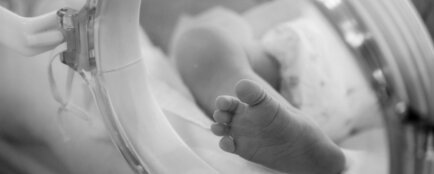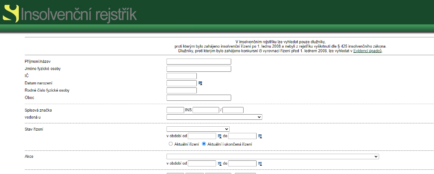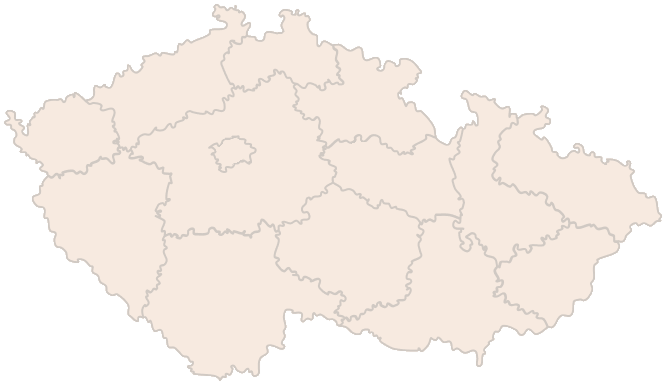What is the purpose of a birth number
A birth number is a unique identifier that serves to uniquely identify a person in the Czech Republic. The birth number is assigned by the Ministry of the Interior when a natural person is first registered in the Population Registration Information System. For persons born in the Czech Republic, this is done when the birth is registered in the civil registry. For foreigners, a birth number is assigned, for example, when a residence permit for more than 90 days is granted, when asylum is granted or when permanent residence is obtained. The birth number is entered in the identity card, passport, medical records or official files.
From a legal point of view, it is personal data within the meaning of the Population Registration Act and the GDPR. It is therefore protected from misuse and its processing is governed by strict rules. The birth number is assigned and administered by the Ministry of the Interior and is one of the data recorded in the Population Registration Information System and the Population Register (ROB).
From a practical point of view , it is used to communicate with the authorities, health insurance company, employer or tax office. It helps to distinguish between persons with the same name and date of birth. And although today there is an increasing shift to random identifiers (e.g. in corporate registers), the birth number still remains the key data for identifying individuals.
Are you solving a similar problem?
Do you have a problem with your birth number?
Do you suspect a mistake in your birth number, have a problem with its inclusion in documents or need to find out how to handle personal data correctly? Use our online legal advice service. We will provide you with initial advice and a solution proposal within 48 hours.
I want to consult
- When you order, you know what you will get and how much it will cost.
- We handle everything online or in person at one of our 6 offices.
- We handle 8 out of 10 requests within 2 working days.
- We have specialists for every field of law.
The basic format of a birth number is RRMMDD/XXXX (for example, 900312/1234). The first six digits represent the date of birth – two digits for the year, two for the month and two for the day. The slash-separated part contains a distinguishing number that indicates the order of birth on that day and a check digit if applicable.
For women, 50 is added to the month number as standard. However, in some cases after 2004, 20 (for males) or 70 (for females) may be added to increase the numerical capacity. If all the allocated birth numbers run out for a particular day of the year, the Ministry determines a new set of replacement birth numbers, again with the first two digits indicating the year of birth, etc. So, for example, 915312 means a woman born on 12 March 1991. This method allows gender to be entered directly into the birth number format.
Birth numbers have 10 digits and must be divisible by eleven without remainder. This is called birth number validation – checking for correctness according to a mathematical rule. However, for people born before 31 December 1953, only nine-digit numbers were used, so the divisibility check may not match for them.
The format of the birth number must always correspond to reality: the date must exist (e.g. 30 February is wrong) and the distinguishing part must be four digits. If you are entering the birth number into an electronic form, it is also often used to check the birth number automatically using the modulo 11 algorithm.
How to convert a birth number to a date of birth
Converting a birth number to a date of birth is easy if you know the principle.
Just take the first six digits: the first two determine the year of birth (YY), the next two the month (MM) and the last two the day (DD). If the person is female, subtract 50 from the month.
For example: 900312/1234 → 12 March 1990 (male), 915312/1234 → 12 March 1991 (female, because month 53 = 3 + 50)
For people born after 2000, it may be necessary to add to 2000 instead of 1900, which you can tell by context (e.g., children born after 2000 cannot have RCs beginning with “00-23” except from this century).
Tip for article
Hint: Marriage for all is so far just a phrase that political parties argue about fulfilling. Although even the latest amendment of the law did not bring the institution of marriage to same-sex couples, from January 2025 their rights in a civil partnership have at least come a little closer to those of spouses.
What does the birth number after the slash indicate
The part after the slash has several functions. The first three digits determine the order of birth of a person on a given day (e.g. 001 to 999). The tenth digit, if present, serves as a check digit – the result of the so-called calculation of the birth number according to the algorithm of division by eleven.
For example, 9003121234 ÷ 11 = 818, which is an integer, so the validation was successful. This checking mechanism was introduced after 1985 and ensures that birth numbers are unique and correctly created.
Thus, the numbers after the slash not only help to distinguish between people born on the same day, but also to verify the correctness of the whole birth number.
How to find out the birth number
The question of how to find out the birth number is a common one, but the answer depends on whose birth number it is.
You can findyour own birth number on your ID card, birth certificate, passport or health insurance records.
Another person’s birth number is personal information that is not publicly available. It can only be obtained with the consent of the person concerned or in cases provided for by law (e.g. at a notary in the context of inheritance proceedings).
Data from the population register can only be obtained in the manner provided for by law – usually through an agency information system or on the basis of a request to the Ministry of the Interior. However, you can only use it if the law allows you to provide this data.
Verification and validation of the birth number
Each birth number can be verified according to several steps.
- Check the length – it should have 9 or 10 digits.
- Verify the format – the first six digits must correspond to a valid date of birth (including the subtraction of 50 for women).
- Birth number validation – for 10-digit numbers, check that the whole number without slashes is divisible by 11. If divisibility does not work, the number is incorrect. Note that older nine-digit birth numbers do not meet this condition, but are still valid.
A birth number is a personal identifier that carries basic birth and gender information. Its correct format, verification and validation are important not only for the authorities but also for each of us when filling in documents, contracts and applications. Validation of the birth number helps to prevent administrative errors, duplications and identity misuse.
Tip for article
Tip: Gender reassignment is a complex process that involves not only personal decisions but also legal and official steps. Under what conditions is gender reassignment possible in the Czech Republic?
Summary
The birth number is a unique identifier of every citizen of the Czech Republic, assigned at birth or when obtaining permanent residence. It is used to uniquely identify a person in official and private systems and is considered personal data protected by the Population Registration Act and the GDPR. It has the format RRMMDD/XXXX, where the first six digits indicate the date of birth and the part after the slash expresses the birth order and a check digit to validate the correctness – 10-digit numbers must be divisible by 11. Older birth numbers issued before 1954 can have nine digits and validation by division by 11 does not apply. The date of birth and gender can be easily obtained from the birth number, but it is sensitive personal data that cannot be freely searched – someone else’s birth number can only be obtained with the person’s consent or with legal authority (e.g. in an official proceeding). Verification of the birth number includes checking the length, validity of the date of birth and divisibility by 11. Correct use of the birth number is important for identification, error prevention and protection against identity fraud.
Frequently Asked Questions
What exactly does the first part of the birth number mean?
Indicates the date of birth in the format YYYYMMDD.
How do I find out the sex from the birth number?
For women, 50 is added to the month (e.g. 53 means March, female). To extend the number series, after 2004, men sometimes add 20 and women 70.
Does the birth number always have to be ten digits?
No. Older birth numbers can be nine digits and still be valid.
How do I check my birth number?
Check the length, correctness of the date and divisibility of 11.
Can I find out another person's birth number?
Only with consent, or where required by law (e.g. official proceedings).




